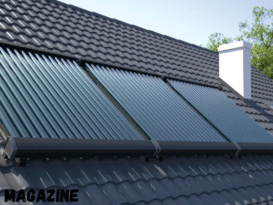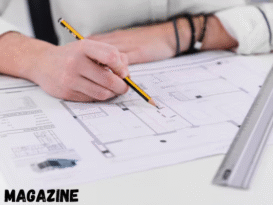The shift towards remote work has transformed the spare room, kitchen corner, or even garden shed into our new professional domain. But a workspace that just gets the job done isn’t enough; your home office should be a place where productivity and comfort meet. A modern home office is designed not just for function, but for well-being.
Here are some contemporary ideas to create a comfortable, ergonomic, and inspiring space right in your own home.
Ergonomics: Investing in Your Body
A comfortable home office starts with the fundamentals of ergonomics. This is about making your body feel good, reducing strain, and increasing focus throughout the workday.
The Right Chair is Non-Negotiable
While a stylish dining chair might look great, it won’t support eight hours of focused work. Invest in a high-quality ergonomic office chair. Look for features like:
Adjustable Lumbar Support: Maintain the natural curve of your lower spine by keeping your back supported.
Adjustable Armrests: To keep your elbows bent at a comfortable $90^{\circ}$ angle and relax your shoulders.
Seat Depth and Height Adjustment: To ensure your feet are flat on the floor (or a footrest) and there’s a small gap between the back of your knees and the chair’s edge.
Integrating Movement with Your Desk
A modern approach to comfort acknowledges that sitting for long periods is detrimental to health. The most effective way to combat this is to alternate your posture. Consider a sit-stand solution. If you want to buy standing desk, look for an electric model that allows you to seamlessly transition between sitting and standing with the touch of a button.
Standing for just a portion of the day can significantly improve circulation, energy levels, and even help reduce back pain. Combine it with an anti-fatigue mat for maximum standing comfort.
Lighting and Tech: Clarity and Focus
Poor lighting causes eye strain, and outdated tech slows down your workflow. A modern office optimises both for clarity and speed.
Layered Lighting for Well-being
Natural light is your best friend. Position your desk to receive daylight, ideally from the side to avoid screen glare. However, you’ll need effective artificial light for late afternoon or cloudy days. Use a layered approach:
Ambient Light: General overhead lighting for the whole room.
Task Light: A desk lamp focused on your immediate workspace. Look for an adjustable LED desk lamp with variable colour temperatures (cooler, whiter light is often better for focus).
Accent Light: Decorative lighting to add personality and a soft glow to a corner.
Streamlining Your Tech Setup
Clutter is the enemy of a peaceful workspace. Minimise cables by investing in wireless peripherals: a good quality ergonomic mouse and keyboard.
Monitor Height: Keep the top of your screen at or slightly below eye level. Use a monitor stand or riser to achieve this. A dual-monitor setup is standard in many modern offices, significantly boosting productivity for tasks requiring cross-referencing.
Cable Management: Use cable ties, sleeves, and under-desk trays to hide unsightly wires. A tidy workspace brings focus and calm.
Aesthetics and Atmosphere: Designing for the Senses
Your home office should be a place you want to spend time in. Incorporating elements of modern design and nature can dramatically improve your mood and creativity.
Colour and Minimalism
Modern design often favours a minimalist aesthetic. Opt for a calm, neutral colour palette, think whites, greys, and soft blues or greens, as a base. You can then add pops of colour through accessories.
The principle of ‘less is more’ applies to your desktop. Keep only the essentials within arm’s reach. Utilise smart storage solutions like floating shelves and drawers to keep reference materials out of sight but easily accessible.
Biophilic Design: Bringing the Outdoors In
Biophilic design, which incorporates nature into the modern environment, is proven to reduce stress and increase creativity. Introduce houseplants to your office. Low-maintenance varieties like a Snake Plant or a Zamioculcas (ZZ plant) can thrive even if you occasionally forget to water them.
A small water feature or a piece of nature-inspired art can also contribute to a calming atmosphere.
Organisation and Flow: Maximising Space
Whether you have a dedicated room or a small nook, a modern office maximises its space with smart organisation and a logical layout.
Creating Zones
If your office is multi-functional (e.g., it’s also a guest room), physically or visually separate the work zone. A stylish screen or a tall bookshelf can act as a subtle room divider, helping you mentally switch into ‘work mode’ when you enter the designated area.
Vertical Storage
In smaller rooms, look up. Use vertical storage solutions like floor-to-ceiling shelving. This draws the eye upwards, making the room feel larger, and keeps floor space clear, which is crucial for maintaining a clean, modern aesthetic.
Conclusion
Creating a modern, comfortable home office is an investment in your productivity and well-being. By focusing on ergonomic necessities, streamlined technology, and an inspiring aesthetic, you can transform your workspace from a temporary arrangement into a permanent haven for focused, comfortable work. A thoughtful design ensures that your work-from-home experience is not just bearable, but genuinely enjoyable and highly productive.

















Show Comments (0)